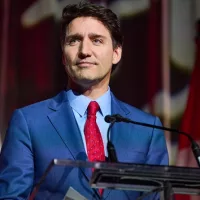
iStock/narvikkBy: ERIN SCHUMAKER, ABC News
(LOS ANGELES) — When Gov. Gavin Newsom put out a call this spring asking California health care workers to volunteer at overwhelmed hospitals in New York City, the early U.S. epicenter of the coronavirus outbreak, Dr. Louis Tran signed up immediately.
Tran, an emergency physician, was stationed at Elmhurst Hospital Center, a public hospital in Queens that made headlines when 13 patients died of COVID-19 during a single 24-hour period in March.
“You know the horrors of war. It’s not the same as going,” said Tran, who returned to New York after his stint at Elmhurst to work in a Bronx intensive care unit.
While New York City’s first wave of the outbreak has since crested, cases and hospitalizations are picking up in California and in Southern and Western states that initially seemed less affected by the virus, such as Florida, Arizona and Texas.
Tran described what he’s seeing in California now as a rising tide compared to the tsunami that struck New York.
Because of his experience treating patients in New York, Tran feels prepared for a surge of cases in California, from a medical and disease management perspective, he said. What he’s more worried about is whether the hospital system itself is equipped for such a spike.
“We see it rising slowly, and quite frankly, we are getting a little nervous about whether our system will get overwhelmed,” he said.
The slow burn in California has protected hospitals from the worst effects of COVID-19, like hospital bed and ventilator shortages, but it also has created a disconnect between the medical community and the general public, Tran explained.
Most people in New York, even those who never became sick, know first-hand how bad it can be. They saw refrigerated trucks filled with bodies behind neighborhood hospitals and heard news reports about potentially burying bodies in the city’s parks if the crisis worsened.
There’s no California equivalent to the horrors New York saw. “Most Californians are not affected by it,” Tran said.
While California was among the first states with reported coronavirus cases, swift action by local governments appeared to have kept the virus at bay. In recent weeks, however, cases in California have climbed precipitously. On July 9, the state had a record 7,821 hospitalizations for confirmed and suspected cases, as well as increasing deaths and a rising positivity rate for COVID-19 tests.
As Dr. Robert Wachter, professor and chair of the University of Southern California, San Francisco’s department of medicine, watched while quarantine fatigue and complacency settled over much of the country, the fear he felt in March and April has given way to anger.
“There is also a layer of disgust, particularly when you look at the other parts of the world that have beaten this back,” Wachter said. “We can’t claim ignorance anymore.”
Rising cases in California, Texas, Arizona and Florida could have been prevented if Americans and politicians had acted more responsibility, he added.
“To see people dying on your watch and know that this didn’t have to happen?” he said of COVID-19 deaths as well as the patients who can’t get non-COVID care because hospitals are packed. “It was completely forgivable in March and April. It’s unforgivable in July.”
“We’ve almost lost our capability to be shocked. But it really is shocking,” he added.
Wachter acknowledged that humans aren’t wired to react to slow-burning threats. Because the effects of lax social distancing and reopening aren’t felt for weeks or months, it’s difficult for people to conceptualize the danger they’re in until it’s at their own doorstep.
“A lot of people are either over it, don’t believe it or aren’t listening at all,” Dr. Jessica Gold, an assistant professor of psychiatry at Washington University in St. Louis, said of Americans’ collective attitude toward coronavirus and social distancing measures.
Before COVID, Gold’s clients primarily were college students, but since the pandemic hit, she’s been providing mental health services to physicians, cafeteria workers, cleaners and administrative employees.
“It’s very hard when you see people get sick doing things that could have been prevented,” Gold said, describing the disconnect between health care workers and the general public.
Frustration with the general public’s unwillingness to act responsibly doesn’t stop Gold from doing her job, “but I think it hurts,” she said. Feeling helpless can lead to lack of purpose, emotional exhaustion, burnout and depression, as sustained helplessness “is a bit soul-crushing in a different way” — even among doctors.
The pandemic has exposed fault lines in American society, among them the tension between the individual and the collective. Wearing masks, a scientifically backed public health measure, has become a cultural flashpoint and health guidance from public health experts is increasingly being cast as political or overreaching.
For example, in Houston, which has seen a surge in coronavirus cases and hospitalizations in recent weeks, Houston Methodist hospital texted safety tips to roughly 10,000 patients, according to The New York Times. The outreach prompted angry phone calls and messages from those patients, incensed at being told what to do, a hospital official told the Times.
Such attitudes frustrate Wachter, who is over 60 and at higher risk for severe COVID-19 should he contract the virus.
“This is not like you’re sending your kids to the Middle East to go to war,” he said of public health directives like social distancing and wearing a mask in public. He faulted the lack of strong consistent messaging from national leaders for encouraging the country’s collective apathy. “There’s nobody to buck everybody up.”
Stephanie Frater, a traveling nurse from Orlando, Florida, who did a stint at a COVID-19 hospital in Manhattan and has since been redeployed to Banner University Medical Center in Phoenix, seemed to agree.
It’s not that Americans don’t want to do their part, Frater explained, but “they are not doing their part because they are being given incorrect information. Quarantine is not a source of punishment.”
How health care workers will deal with one or more stints treating COVID-19 patients depends on the individual, according to Gold.
Risk factors prior to that work, like previous traumatic experiences, can increase one’s risk for developing mental health conditions like anxiety, depression or post-traumatic stress syndrome.
While it’s too early to truly quantify the effect that treating patients under combat-like conditions will have on doctors in the coming months or years, preliminary research out of China highlights the mental health risk that American health care workers potentially face.
Of more than 1,200 health care workers surveyed in China, roughly half showed symptoms of depression or anxiety, according to a JAMA Network Open article published in March. More than a third of those surveyed reported insomnia. Some 70% said they were distressed. Nurses, women and health workers who had direct contact with COVID-19 patients and those in Wuhan, the epicenter of China’s outbreak, reported the most severe symptoms.
Not everyone who experiences trauma will develop conditions like anxiety or depression. Tran, the emergency physician, said that COVID-19 has re-energized his relationship with medicine.
“Most of us are drawn to emergency medicine for a reason. We tend to be adrenaline junkies. We’re used to roughing it,” he added. “We see life differently than the average American. We’re used to the trauma and the uncertainty.
“This is a true emergency, and I’m needed. It’s given me a second life.”
Of course, doctors aren’t a monolithic group. Other health care workers have had very different reactions to treating patients on the COVID-19 front lines.
Faced with uncertainty, risk to their health and the health of their families, as well as insufficient personal protective equipment, some quit or retired. Others said they’re worried about whether they can handle the trauma of treating a potential second wave of COVID-19 patients in New York.
“Physically, I’m well. Mentally, I’m exhausted,” Frater said. Not being able to improve patients’ symptoms with a drug or procedure was draining, she explained. Patient deaths were hard on her, too.
Still, she was ready to be redeployed to more hotspots after Arizona. “I have as many stints in me as it takes to get our country back,” Frater said.
Importantly, trauma has no timeline, according to Gold. “Some people might feel fine to handle another wave and it might hit them later,” she explained. “You’re not lying. Everyone has their own schedule.”
But in the end, the toll of burnout and trauma is like being on a sinking ship.
“Every time you get a day off, you’re just emptying a pail of water off the sinking ship,” Gold said. “You’re still always sinking.”
Copyright © 2020, ABC Audio. All rights reserved.












